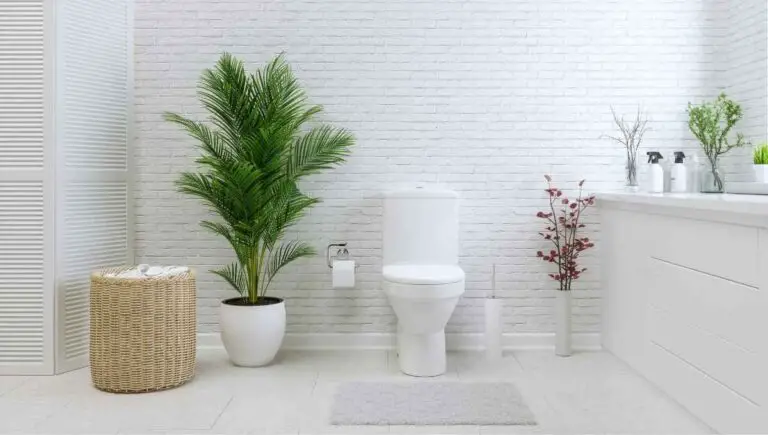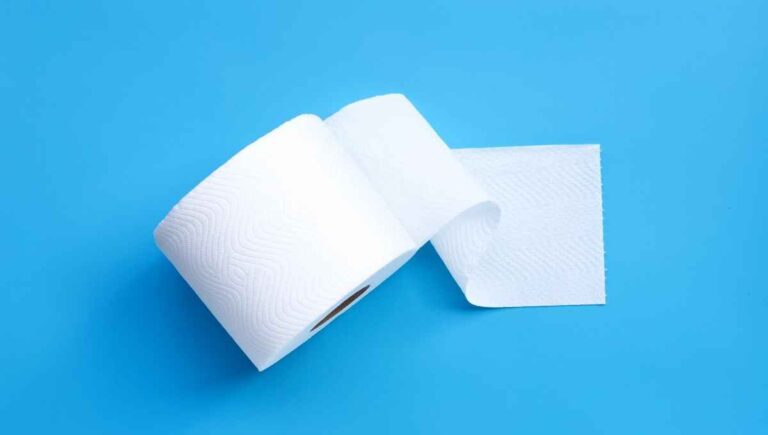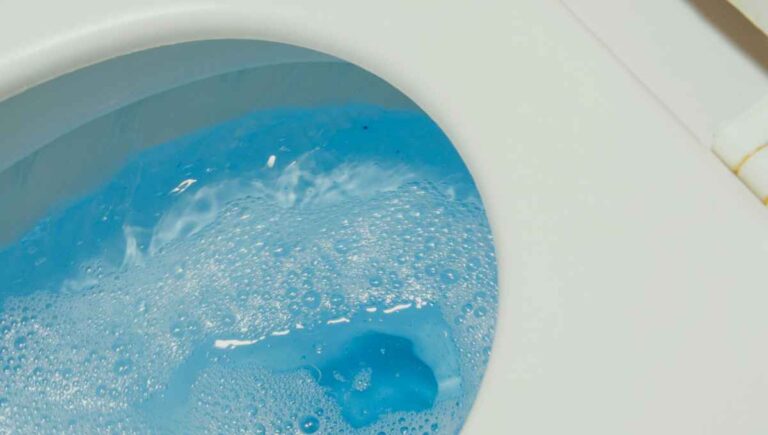Can You Flush Contacts Down the Toilet? (What Might Happen)

Contact lenses are a convenient way to correct vision issues for many people. However, when it comes time to dispose of them, it’s important to know the proper method to avoid causing damage to your plumbing system and the environment. You might be wondering, can you flush contacts down the toilet?
You should never flush contact lenses down the toilet. Contact lenses are small and flexible, which can make them seem like a harmless item to flush away. However, flushing them can cause significant damage to your plumbing system and harm the environment.
But don’t worry, there are easy and safe ways to dispose of your contacts. In fact, it’s important to dispose of them properly to help protect the environment and our waterways. In this post, we’ll share some simple steps for safely disposing of contacts and explain why it’s so important.
This post contains affiliate links. This means Household Blogger may earn a commission should you make a purchase using any of our links. Please refer to our full affiliate disclosure policy for full details.
Here’s a Quick Pro Tip!
Here are some options available on Amazon:
1. Contact Lens Cases with Lids (Pack of 12) – Keep your contact lenses safe and secure.
2. Opti-Free Puremoist Multi-Purpose Disinfecting Solution with Lens Case – A complete solution for contact lens cleaning and disposal.
3. DMV Scleral Cup Large Contact Lens Handler – For those with larger lenses, this cup makes it easy to handle and dispose of them.
Reasons People Consider Flushing Contacts
Flushing contact lenses down the toilet may seem like a convenient way to get rid of them, but it can cause significant harm to the environment and your plumbing system. Despite being small in size, contact lenses can add up quickly and cause blockages in the pipes.
One of the main reasons people flush contact lenses down the toilet is that they are unaware of the harm they can cause. The lenses are made from plastic and are not biodegradable, meaning that they do not decompose in the environment.
Instead, they break down into smaller microplastics, which can cause harm to marine life when they end up in rivers and oceans.
Additionally, flushing contacts down the toilet can cause damage to your plumbing system. Contact lenses are not designed to dissolve in water, and they can accumulate in your pipes, causing clogs and backups. This can lead to costly repairs and inconvenience for you.
Instead of flushing your contact lenses down the toilet, it is recommended to dispose of them properly. Many optometrists offer recycling programs, where you can drop off your used contact lenses and their packaging.
This helps to reduce the amount of waste going to landfills and protects the environment.
The Dangers of Flushing Contacts
Wearing contact lenses has become a popular choice for vision correction. Millions of people use them every day to improve their sight. However, many contact lens wearers may not realize that flushing their contacts down the drain after use can have serious consequences.
In this blog section, we will explore the dangers of flushing contacts and why it is important to dispose of them properly.
Damage to the Plumbing System
Flushing contact lenses down the toilet can cause significant damage to your plumbing system. The small size of the contact lenses can lead to blockages in the pipes, which can result in backups and clogs.
This can be especially problematic if the blockage occurs in the main sewer line, as it can cause sewage backups and flooding.
In addition to causing blockages, contact lenses can also contribute to corrosion in your plumbing system. This is because the plastic material of the lenses does not break down in the water, and can accumulate in the pipes over time.
As the plastic builds up, it can create a barrier that prevents water and other materials from flowing through the pipes. This can lead to corrosion of the pipes and cause leaks, which can result in water damage to your home.
Another factor to consider is the lack of dissolvability of contact lenses in water. Contact lenses are made of materials designed to be worn on the eyes and not meant to be flushed down the toilet.
As a result, they do not dissolve in water and can accumulate in the pipes over time. This can lead to clogs and blockages and contribute to corrosion in the plumbing system.
Overall, it is important to properly dispose of contact lenses to avoid causing damage to your plumbing system. Flushing contact lenses down the toilet can lead to blockages, corrosion, and other plumbing issues that can be costly to repair.
You can protect your plumbing system and prevent unnecessary damage by disposing of your contact lenses properly.
Harm to Wildlife
The careless disposal of contact lenses by flushing them down the toilet has significant environmental consequences, especially for wildlife. When contact lenses enter aquatic ecosystems, birds and fish are the two most affected species.
Birds mistake small contact lenses for food, especially those that have broken down into microplastics. Once ingested, the contact lenses can cause significant harm to the bird’s digestive system, leading to death in severe cases.
Research indicates that contact lenses are prevalent in the stomachs of seabirds, leading to reduced food intake, and causing the bird to die of starvation. Contact lenses are also known to cause injury to the esophagus and crop of birds, reducing their overall fitness and survival rates.
Fish also face the consequences of contact lenses being flushed down the toilet. The tiny pieces of plastic that makeup contact lenses have been found in fish in both freshwater and marine ecosystems.
The ingestion of these plastics can cause significant harm to fish, such as obstructing their digestive tracts, causing physical damage, and altering their behavior patterns. Research indicates that fish exposed to microplastics, including contact lenses, are more likely to die prematurely, affecting the fish population’s overall reproductive success.
It is evident that the careless disposal of contact lenses by flushing them down the toilet can have far-reaching consequences for wildlife, especially birds and fish. Therefore, it’s essential to dispose of contact lenses responsibly and adopt environmentally-friendly practices that do not harm our natural ecosystems.
Contamination of Water Sources
Flushing contact lenses down the toilet poses a significant threat to water contamination, affecting public health and the environment. When contact lenses are flushed down the toilet, they are not filtered by sewage treatment plants and end up in rivers, lakes, and oceans.
The impact on public health is significant because wastewater treatment plants are not designed to remove contact lenses. As a result, these tiny plastics often end up in drinking water sources.
While contact lenses themselves may not be harmful, they can carry pathogens, bacteria, and viruses that cause water-borne diseases. Therefore, the presence of contact lenses in drinking water sources may pose a risk to public health, especially in areas where water scarcity is an issue.
The environmental impact of contact lenses flushed down the toilet is also a matter of concern. The small pieces of plastic that makeup contact lenses are not biodegradable and can persist in the environment for years.
When they enter water sources, they can pose a risk to aquatic life and affect the food chain. The chemicals used in contact lenses, such as softeners and hardeners, can also leach into the water and impact aquatic ecosystems’ overall health.
Alternatives to Flushing Contacts
In this blog section, we’ll discuss alternatives to flushing contact lenses. Many people flush their lenses down the toilet or sink, which harms the environment. We’ll explore proper disposal methods, recycling programs, and the impact of flushing contacts on the environment.
Whether you’re a regular contact lens user or new to them, this section offers valuable information on environmentally responsible disposal.
Disposing of Contacts in the Trash
There is an easy and safe way to dispose of contacts by simply throwing them in the trash. However, cleaning and drying the lenses before disposing of them in the trash is important.
This is because contacts can be a breeding ground for bacteria and other microorganisms, which can harm the environment and potentially pose a health risk if they end up in a landfill.
To clean your contact lenses before disposal, remove them from your eyes and place them in a clean case filled with fresh contact lens solution. Allow the lenses to soak for the recommended amount of time (usually at least 4 hours) to ensure that any dirt, debris, or bacteria is removed.
After soaking, remove the lenses from the solution and use a clean tissue or cloth to gently pat them dry. Make sure the lenses are completely dry before disposing of them in the trash.
It’s worth noting that some contact lenses are made from materials that are not biodegradable, which means they can take a very long time to decompose in a landfill. If possible, consider using contact lenses made from more eco-friendly materials or switching to daily disposable lenses, eliminating the need for cleaning and long-term storage.
Recycling Contacts through Certain Programs
Recycling contact lenses can be a great way to reduce waste and contribute to a more sustainable future. Fortunately, several programs are in place that make recycling your old contact lenses and their packaging easy.
One such program is the “Bausch + Lomb ONE by ONE Recycling Program,” which allows users to recycle their used contact lenses, blister packs, and top foils. The program is free to participate in and can be done by printing a shipping label from their website and sending your used contact lens items to the designated recycling center.
Another program is the “Acuvue Contact Lens Recycle Program,” which accepts used Acuvue contact lenses and packaging. To participate, simply collect your used lenses and packaging in a container, print a shipping label from their website, and send the container to the designated recycling center.
Some other programs to consider include TerraCycle, which partners with Bausch + Lomb to recycle contact lenses, and LensCycle, which accepts all brands of contact lenses and their packaging.
To participate in any of these recycling programs, simply visit the program’s website, review their guidelines and instructions, and follow the steps to send in your used contact lenses and packaging.
It’s worth noting that some programs may have specific requirements, such as only accepting certain brands of contact lenses or only accepting specific types of packaging, so be sure to review the guidelines carefully before sending in your items.
Using a Contact Lens Disposal System
Using a contact lens disposal system can be a great option for those who want a hassle-free and eco-friendly way to dispose of their contact lenses. These systems are designed to make it easy to dispose of your contact lenses without worrying about whether they will end up in a landfill or harm the environment.
One of the main benefits of using a contact lens disposal system is that it can help reduce waste and protect the environment. These systems often use biodegradable materials and are designed to break down quickly, so they won’t contribute to the growing problem of plastic waste in landfills and oceans.
Several types of contact lens disposal systems are available, including disposable contact lens cases that can be thrown away after each use, and recycling bins specifically designed for used contact lenses and their packaging.
Some systems even come with prepaid shipping labels, making it easy to send your used contact lenses and packaging to a recycling center for proper disposal.
You might also enjoy our post on Whethher You Can Flush Baby Wipes Down The Toilet
Tips for Proper Contact Lens Disposal
Improper disposal of contact lenses can have serious consequences for both the environment and your eyes. In this section, we’ll discuss tips for proper contact lens disposal, and by following these tips, you can protect the environment and keep your eyes healthy.
Cleaning and Storing Lenses Before Disposal
Before disposing of your contact lenses, it is important to ensure they are properly cleaned and stored. This not only helps prevent the spread of bacteria and infection but it also ensures that the lenses are disposed of in the most hygienic and environmentally-friendly way possible.
Wash your hands thoroughly with soap and water to clean your lenses before disposal. Then, remove the lenses from your eyes and rinse them with a saline solution or contact lens solution. Gently rub the lenses with your fingertips to remove any debris or buildup, and then rinse them again to remove any leftover cleaning solution.
Once the lenses are clean, it is important to store them properly until they can be disposed of. This can be done by placing them in a clean, dry contact lens case. Be sure to use fresh contact lens solution in the case, and never reuse solution from previous use.
Properly cleaning and storing your contact lenses before disposal is important for several reasons. Firstly, it helps prevent the spread of bacteria and infection. Dirty or contaminated lenses can lead to eye infections or other complications, which can be harmful to your health.
Additionally, properly cleaning and storing your lenses can help protect the environment. Lenses that are disposed of without being properly cleaned and stored can end up in landfills, where they can take years to break down and may harm the environment.
Disposing of Lenses in the Right Way
When it comes to disposing of contact lenses, it is important to follow the proper guidelines to ensure that they are disposed of in a safe and environmentally-friendly way. Here are some tips to help you dispose of your contact lenses in the right way:
- Do not flush your contact lenses down the toilet or sink. This can cause damage to plumbing systems and contribute to environmental pollution.
- Always dispose of your contact lenses in the trash. Before doing so, be sure to clean and dry your lenses and their packaging according to the guidelines provided by your optometrist or contact lens manufacturer.
- Consider using a contact lens recycling program or a contact lens disposal system to further reduce your environmental impact. These options provide a safe and eco-friendly way to dispose of your contact lenses and their packaging.
- If you wear daily disposable contact lenses, consider switching to reusable lenses. This can help reduce waste and the need for frequent disposal.
- When purchasing contact lenses, look for brands that are committed to sustainability and eco-friendly practices.
By following these guidelines and tips, you can help reduce your environmental impact and ensure that your contact lenses are disposed of in a safe and responsible way.
The Environmental Impact of Contact Lens Waste
Contact lenses have become a popular choice for vision correction. However, the convenience of contact lenses comes with a price for the environment.
In this section, we will discuss the environmental impact of contact lens waste, including how they contribute to microplastic pollution and what you can do to reduce your impact.
Plastic Pollution
Plastic pollution is one of the biggest environmental challenges we face today. It significantly threatens our ecosystems, wildlife, and human health. Plastic debris can be found in every corner of the world, from the depths of the ocean to the tops of mountains.
The sheer volume of plastic waste we generate each year is staggering, and it’s devastatingly impacting our planet.
The impact of plastic pollution on the environment is severe. Plastic waste is not biodegradable, which means that it will persist in the environment for hundreds of years. Plastic debris can also harm wildlife, with marine animals often mistaking it for food.
Plastic pollution can also harm ecosystems by altering habitats, contaminating soil, and interfering with nutrient cycles.
The role of contact lens waste in plastic pollution is significant. It is estimated that 45 million Americans wear contact lenses, and many of them end up in our waterways. When contact lenses are flushed down the toilet, they often end up in our oceans, which can threaten marine life.
Contact lenses are typically made from a combination of plastic and silicone, which means that they are not biodegradable. They can break down into smaller and smaller pieces, called microplastics, which can be ingested by fish and other marine animals.
It’s essential to recognize that plastic pollution is a complex issue, and there are no easy solutions. However, there are steps that we can take to help mitigate its impact. One way is to reduce our use of plastic products and dispose of them properly.
Proper disposal means recycling, but it also means not flushing things down the toilet that shouldn’t be there. This includes contact lenses, which should be disposed of in the trash. By taking small steps like these, we can all play a role in protecting our planet from the harmful effects of plastic pollution.
Impact on Marine Life
Contact lens waste is one of the many types of plastic pollution that are harmful to marine life. When contact lenses end up in the ocean, they can be mistaken for food by marine animals.
This is especially dangerous for filter feeders like whales, who ingest large amounts of water as they feed, and therefore are at risk of consuming large amounts of plastic. Once ingested, plastic can cause physical harm to animals, including internal damage to the digestive tract.
Contact lenses can also contribute to the buildup of microplastics in the ocean. Microplastics are small plastic particles that are less than five millimeters in length.
These tiny particles are a major concern for marine life because they can be easily ingested by small animals and accumulate in the food chain, eventually leading to larger animals ingesting the plastics. The buildup of microplastics can also impact the overall health of marine ecosystems.
Proper disposal of contact lenses is crucial in preventing their impact on marine life. Rather than flushing them down the toilet, contact lenses should be disposed of in the trash.
Many optometrists offer programs for recycling contact lenses and their packaging, so it’s worth checking with your local optometrist to see if they have a program in place.
It’s also important to recognize that proper disposal of contact lenses is just one piece of the puzzle. To truly address the issue of plastic pollution and its impact on marine life, we need to make a concerted effort to reduce our use of plastic products overall.
This means finding alternatives to single-use plastics, reducing our overall consumption of plastic products, and properly disposing of the plastics that we do use. By taking these steps, we can help protect marine life and ensure a healthy future for our oceans.
You might also enjoy our post on Whether You Can Flush Tissues Down The Toilet
Final Thoughts
Flushing contact lenses down the toilet is a bad idea that can have serious consequences for both the environment and our health. The tiny pieces of plastic from contact lenses can accumulate in our water systems and oceans, polluting the environment and posing a risk to marine life.
Additionally, the chemicals used in contact lens solutions can be harmful to aquatic ecosystems and can even find their way back into our drinking water.
To prevent this from happening, it’s important to dispose of contact lenses properly by placing them in the trash or recycling them through a specialized program.
It’s also important to spread awareness about the harmful effects of flushing contacts down the toilet and to encourage others to adopt proper disposal practices. By taking these small steps, we can all play a role in protecting our environment and preserving our health.








